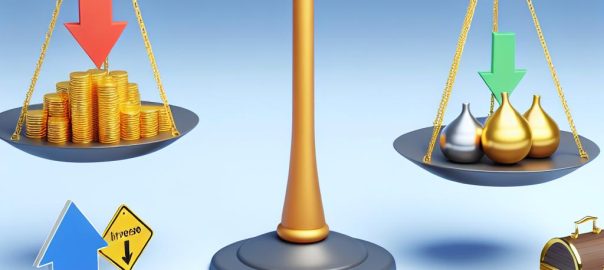Understanding Leveraged and Inverse ETFs
Leveraged and inverse exchange-traded funds (ETFs) are financial products that are tailor-made for a specific type of investor—those who have a particular appetite for higher risks and the possibility of larger returns. While traditional ETFs aim to provide returns that closely match the performance of an underlying index, leveraged and inverse ETFs use more complex financial engineering to achieve distinct investment objectives. They utilize derivatives and debt to substantially enhance the returns, or to inverse the returns of a given index or benchmark.
What Are Leveraged ETFs?
Leveraged ETFs are specialized instruments aimed at delivering multiple times the performance of the index or benchmark they follow. For example, a 2x leveraged ETF endeavors to provide twice the daily return of its associated index. Therefore, if the underlying index reflects a 1% gain in a single trading day, theoretically, a 2x leveraged ETF could offer investors a 2% gain.
How Leveraged ETFs Work
Leveraged ETFs achieve their objectives through the integration of various financial derivatives including options, futures, and swaps, paired with an element of debt. These financial instruments allow the ETF to effectively magnify the performance of its corresponding index. It is crucial to understand that the majority of leveraged ETFs are constructed to meet their immediate daily target multiple returns. Consequently, the aggregated long-term performance of these funds might deviate substantially from expectations due to the compounding effects of daily returns, an aspect that investors must be aware of when holding these instruments over extended periods.
What Are Inverse ETFs?
Inverse ETFs, in contrast, are designed to perform in the opposite direction of their associated indexes. They attract investors looking to capitalize on market downturns or to hedge against potential declines in an existing portfolio. For instance, if an underlying index decreases by 1% on a particular day, an inverse ETF calibrated to provide an opposite return would aim to deliver a 1% increase.
Mechanics of Inverse ETFs
Much like leveraged ETFs, inverse ETFs employ a range of financial mechanisms—such as options and short-selling—to facilitate their inverse returns. These products are primarily geared for short-term trading or hedging strategies, and they are generally not recommended for long-term investments due to possible risks associated with their architecture.
Risks of Leveraged and Inverse ETFs
While the potential for scaled-up profits is an attractive trait, leveraged and inverse ETFs are accompanied by a higher degree of risk as well. A significant concern is **compounding risk**, resulting from the daily reset feature of these ETFs. Because of this characteristic, the actual performance of leveraged and inverse ETFs can wander notably from their intended outcomes over the long term. The risks associated with compounding are especially accentuated in volatile market conditions where daily price fluctuations may erode long-term gains or worsen losses.
Another important consideration is **counterparty risk**. Leveraged and inverse ETFs frequently rely on derivative contracts with third-party financial institutions. If these counterparties are unable to fulfill their contractual agreements, the ETF’s performance could be adversely affected.
Additionally, these ETFs face challenges concerning **transaction costs**. Due to their design for daily trading, they might incur frequent trading, leading to elevated brokerage fees and a potentially larger tax burden. These additional costs can eat into profits, making it essential for investors to account for these expenses when calculating potential returns.
Potential Benefits of Leveraged and Inverse ETFs
When wielded with a proper understanding of their intricacies, leveraged and inverse ETFs can present attractive opportunities for investors aiming to **enhance returns** from brief fluctuations in market prices, offering prospects for higher profits compared to standard ETFs. They serve as useful mechanisms for both **speculation** and **hedging**. For instance, an investor anticipating a short-term dip in market conditions can employ an inverse ETF to mitigate potential losses across their portfolio.
Who Should Consider These ETFs?
These financial tools might be particularly suitable for **seasoned investors** who possess a comprehensive grasp of market dynamics and proficiency in risk management. Given the inherent risks tied to their daily reset mechanism and the nature of compounding returns, these ETFs are generally not advisable for traditional long-term, buy-and-hold investors.
In the realm of leveraged and inverse ETFs, conducting comprehensive research is indispensable. Understanding the intrinsic mechanisms and associated risks and benefits of these products is vital to making informed investment decisions. Consulting with financial advisors or investment experts can also be prudent to ensure these ETFs align with one’s overall financial strategy. For more detailed information, investors can seek resources through established financial institutions and professional advisory services to better navigate the complex landscape of these investment products.
This article was last updated on: June 6, 2025

